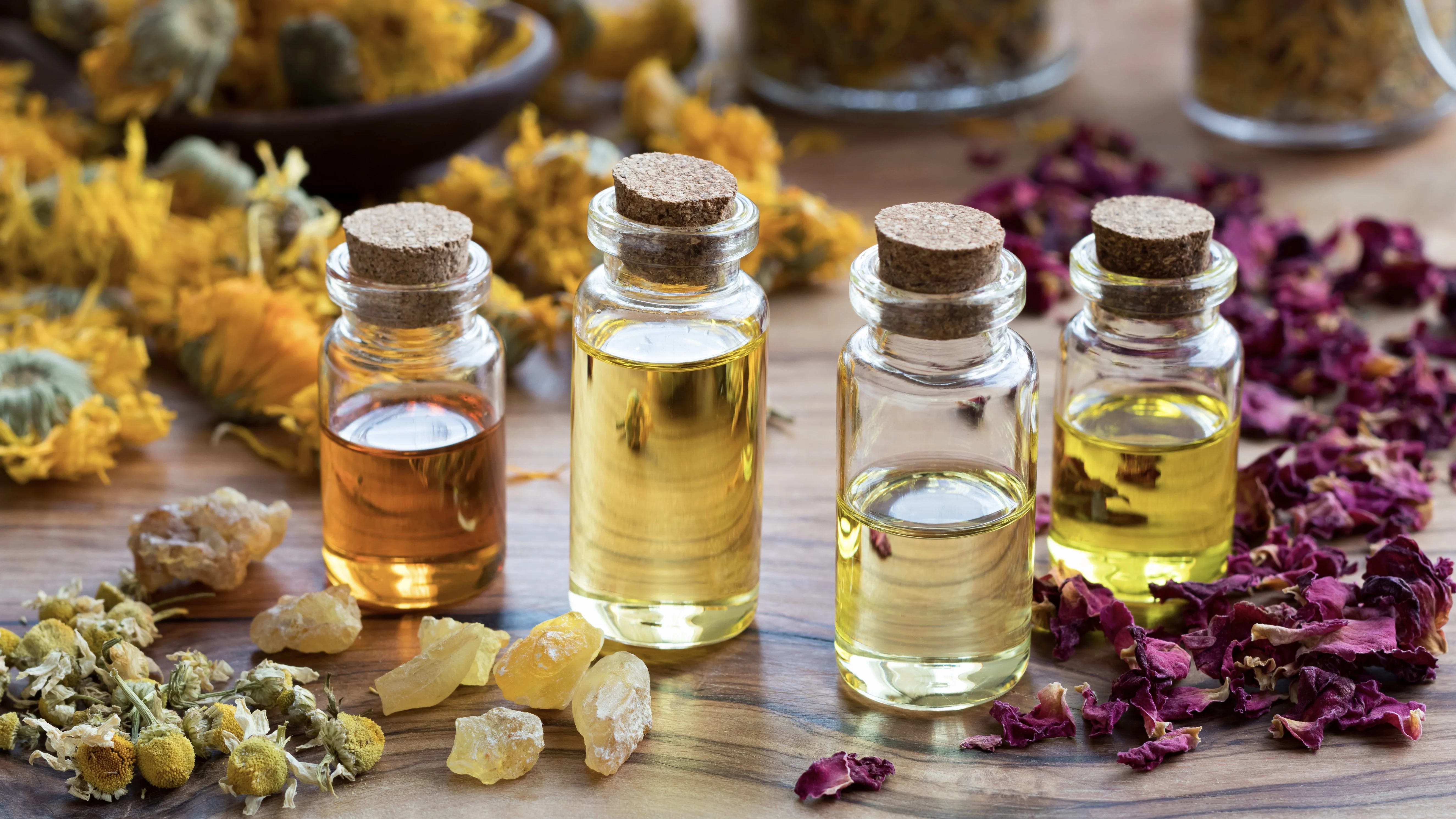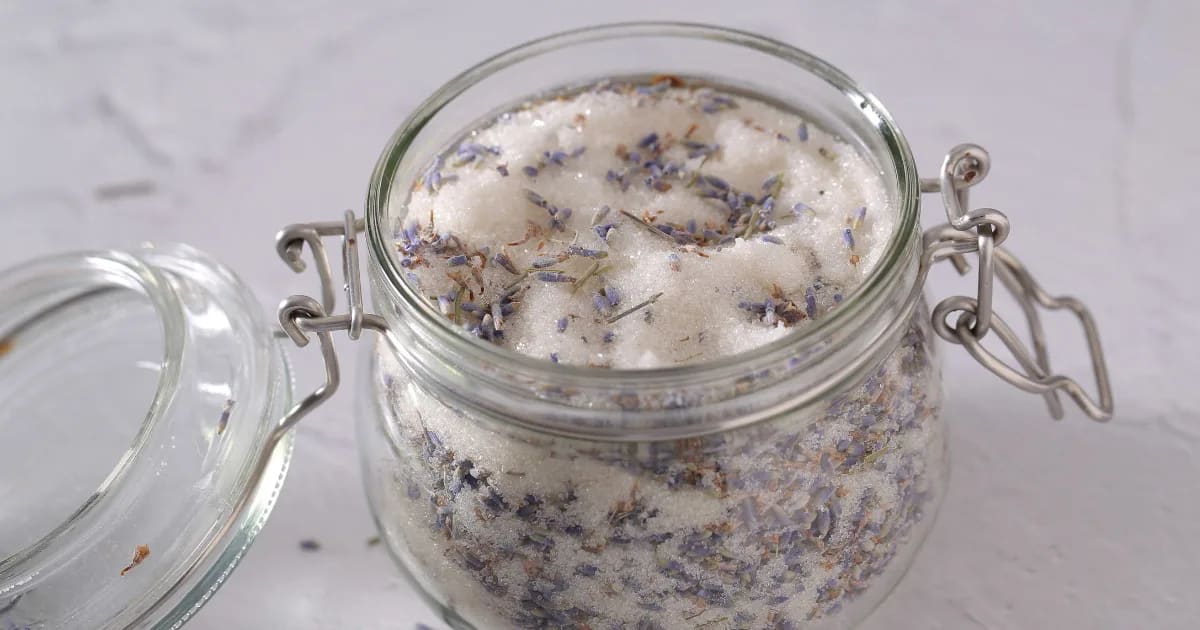How Yarrow Essential Oil Soothes Achy Joints

Yarrow is traditionally used to soothe achy joints.
Yarrow is incredible for all sorts of pain! It’s even said that the legendary warrior of myth Achilles used Yarrow to care for his wounded soldiers at the Battle of Troy. Hence Yarrow’s Latin name: Achillea millefolium!
Yarrow is especially trusted for situations that are sore and inflamed. That includes achy joints in the hands, wrists, and fingers.
And now we have research proving Yarrow’s traditional benefits!
Yarrow essential oil research
A 2007 study confirmed that Yarrow can inhibit substances involved in the inflammatory process. And a 2013 study identified 19 components of Yarrow and determined “Achillea millefolium essential oil can be utilized in many applications, including the treatment of inflammatory diseases.”
Some of Yarrow’s most pain-soothing components are sabinene, β-pinene, β-caryophyllene, and chamazulene, which also gives the oil a rich blue or green hue.
I love when modern research confirms traditional uses of our beloved plants. Let’s celebrate by making a Yarrow-rich joint salve recipe!
Blue Juniper Joint Salve
Yarrow is especially trusted for situations that are sore and inflamed.
Apply it as needed!
Ingredients
1.5 oz (45 ml) Jojoba Oil (Simmondsia chinensis)
½ oz (14 g) Beeswax (Cera flava)
9 drops Juniper Berry Oil (Juniperus communis)
9 drops Yarrow Oil (Achillea millefolium)
7 drops Citronella Java Oil (Cymbopogon winterianus)
7 drops White Turmeric Oil (Curcuma zedoaria)
Equipment
One 2 oz (60 ml) glass jar or aluminum tin
Several small bowls (to measure your ingredients)
Kitchen scale
Glass stirring rod (or a stainless steel spoon)
Pyrex measuring cup
A cooking pot that can hold the Pyrex
Directions
Set up a stovetop melting method. Try placing a glass measuring cup in a soup pot that’s about ¼ full of simmering water.
Melt the beeswax in the glass measuring cup.
Add the jojoba and melt, stirring gently.
Remove the blend from the heat.
Add the essential oils and stir.
Pour the melted salve into your glass jar or aluminum tin.
Your hand salve should be ready to use in about 15 minutes, but it will continue to harden over the next 24 hours. It has a nice, firm texture that softens between your fingers and as you massage it into the joints of your hands.
Now you know why Yarrow is so effective for soothing achy joints.
Let’s talk about why the other oils in this blend are so potent!
Juniper Berry essential oil (Juniperus communis)
Foresty, spicy Juniper Berry is one of my go-to essential oils for achy joints.
I love its warming effect as it brings circulation to the area where it’s applied. And it contains plenty of soothing α-pinene, a monoterpene component that’s been shown to calm inflammation. This is a great oil to keep “on hand” if your hands and finger joints ache!
Citronella Java essential oil (Cymbopogon winterianus)
The soothing components geraniol and citronellal come together in Citronella Java for a smooth, perfume-like pain-relieving experience! These two molecules are proven to reduce inflammation, which makes them ideal for an achy joint blend.
White Turmeric essential oil (Curcuma zedoaria)
Turmeric has developed a reputation for pain relief—and that reputation is well-earned!
White Turmeric gets the job done without the familiar yellow-orange tint. It comes from Nepal and is actually a member of the Ginger family. A 2006 study concluded that White Turmeric contains a number of inflammation-calming sesquiterpenes, including curzerenone and sabinene (a component that also shows up in Yarrow oil).
Looking for a joint blend for your knees?
Try this recipe from our YouTube channel! It’s a Knee Pain Gel made in a base of aloe vera. It includes Ginger, Lavender, and two more oils that work on an ongoing basis to soothe your joints.
REFERENCES
Akkol, E.K., Güvenc, A. and Yesilada, E. (2009) A comparative study on the antinociceptive and anti-inflammatory activities of five Juniperus taxa. Journal of Ethnopharmacology 125, 2, 330-336.
Benedek B, Kopp B. (2007) Achillea millefolium L. s.l. revisited: recent findings confirm the traditional use. Wien Med Wochenschr. 2007;157(13-14):312-4. doi: 10.1007/s10354-007-0431-9. PMID: 17704978.
Chou, S. T., Peng, H. Y., Hsu, J. C., Lin, C. C., & Shih, Y. (2013). Achillea millefolium L. essential oil inhibits LPS-induced oxidative stress and nitric oxide production in RAW 264.7 macrophages. International journal of molecular sciences, 14(7), 12978-12993. doi.org/10.3390/ijms140712978
Guimarães AG, Quintans JSS, Quintans-Júnior LJ. (2013) Monoterpenes with analgesic activity – a systematic review. Phytotherapy Research 27,1-15.
Makabe H, Maru N, Kuwabara A, Kamo T, Hirota M. (2006) Anti-inflammatory sesquiterpenes from Curcuma zedoaria. Natural Product Research. 2006 Jun;20(7):680-5. doi: 10.1080/14786410500462900. PMID: 16901812.
Melo MS, Guimarães AG, Santana MF, Siqueira RS, De Lima Ado C, Dias AS, Santos MR, Onofre AS, Quintans JS, De Sousa DP, Almeida JR, Estevam CS, Araujo BS, Quintans-Júnior LJ. (2011) Anti-inflammatory and redox-protective activities of citronellal. Biological Research. 2011;44(4):363-8. Epub 2012 Feb 10. PMID: 22446600.
Saeidnia, S., Gohari, A.R., Mokhber-Dezfuli, N., Kiuchi, F. (2011) A review on phytochemistry and medicinal properties of the genus Achillea. DARU Journal of Pharmaceutical Sciences 19(3): 173–186.
Su, Y.W., Chao, S.H., Lee, M.H., Ou, T.Y. and Tsai, Y.C. (2010) Inhibitory effects of citronellol and geraniol on nitric oxide and prostaglandin E2 production in macrophages. Planta Medica 76, 1666-1671.
Valente, J., Zuzarte, M., Gonçalves, M. J., Lopez, M. C., Cavaliero, C., Salguero, L. and Cruz, M. T. (2013) Antifungal, antioxidant and anti-inflammatory activities of Oenathe crocata L. essential oil. Food Chemistry and Toxicology 62, 349-354.





